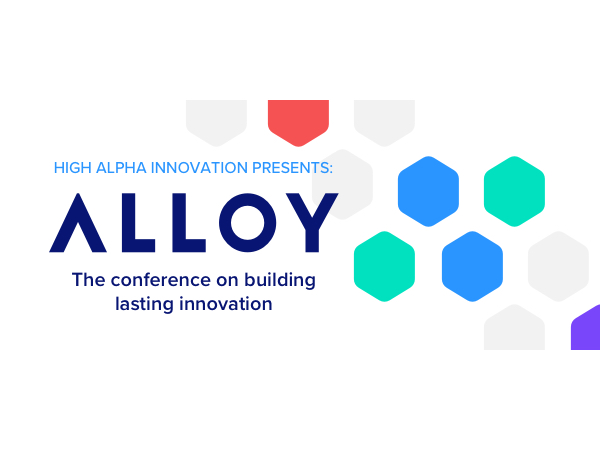


The 5 Gifts of Uncertainty
It seems like 90% of conversations these days start with those two sentences. We ask out of genuine concern and also out of a need to commiserate, to share our experiences, and to find someone that understands.
The connection these questions create is just one of the Gifts of Uncertainty that have been given to us by the pandemic.
Yes, I know that the idea of uncertainty, especially in big things like our lives and businesses, being a gift is bizarre. When one of my friends first suggested the idea, I rolled my eyes pretty hard and then checked to make sure I was talk to my smart sarcastic fellow business owner and not the Dali Lama.
But as I thought about it more, started looking for “gifts” in the news and listening for them in conversations with friends and clients, I realized how wise my friend truly was.
Faced with levels of uncertainty we’ve never before experienced, people and businesses are doing things they’ve never imagined having to do and, as a result, are discovering skills and abilities they never knew they had. These are the Gifts of Uncertainty
- Necessity of offering a vision – When we’re facing or doing something new, we don’t have all the answers. But we don’t need all the answers to take action. The people emerging as leaders, in both the political and business realms, are the ones acknowledging this reality by sharing what they do know, offering a vision for the future, laying out a process to achieve it, and admitting the unknowns and the variables that will affect both the plan and the outcome.
- Freedom to experiment – As governments ordered businesses like restaurants to close and social distancing made it nearly impossible for other businesses to continue operating, business owners were suddenly faced with a tough choice – stop operations completely or find new ways to continue to serve. Restaurants began to offer carry out and delivery. Bookstores, like Powell’s in Portland OR and Northshire Bookstore in Manchester VT, also got into curbside pick-up and delivery game. Even dentists and orthodontists began to offer virtual visits through services like Wally Health and Orthodontic Screening Kit, respectively.
- Ability to change – Businesses are discovering that they can move quickly, change rapidly, and use existing capabilities to produce entirely new products. Nike and HP are producing face shields. Zara and Prada are producing face masks. Fanatics, makers of MLB uniforms, and Ford are producing gowns. GM and Dyson are gearing up to produce ventilators. And seemingly every alcohol company is making hand sanitizer. Months ago, all of these companies were in very different businesses and likely never imagined that they could or would pivot to producing products for the healthcare sector. But they did pivot.
- Power of Relationships – Social distancing and self-isolation are bringing into sharp relief the importance of human connection and the power of relationships. The shift to virtual meetups like happy hours, coffees, and lunches is causing us to be thoughtful about who we spend time with rather than defaulting to whoever is nearby. We are shifting to seeking connection with others rather than simply racking up as many LinkedIn Connections, Facebook friends, or Instagram followers as possible. Even companies are realizing the powerful difference between relationships and subscribers as people unsubscribed en mass to the “How we’re dealing with COVID-19 emails” they received from every company with which they had ever provided their information.
- Business benefit of doing the right thing – In a perfect world, businesses that consistently operate ethically, fairly, and with the best interests of ALL their stakeholders (not just shareholders) in mind, would be rewarded. We are certainly not in a perfect world, but some businesses are doing the “right thing” and rea being rewarded. Companies like Target are offering high-risk employees like seniors pregnant women, and those with compromised immune systems 30-days of paid leave. CVS and Comcast are paying store employees extra in the form of one-time bonuses or percent increases on hourly wages. Sweetgreen and AllBirds are donating food and shoes, respectively, to healthcare workers. On the other hand, businesses that try to leverage the pandemic to boost their bottom lines are being taken to task. Rothy’s, the popular shoe brand, announced on April 13 that they would shift one-third of their production capacity to making “disposable, non-medical masks to workers on the front line” and would donate five face masks for every item purchased. Less than 12 hours later, they issued an apology for their “mis-step,” withdrew their purchase-to-donate program, and announced a bulk donation of 100,000 non-medical masks.
Before the pandemic, many of these things seemed impossibly hard, even theoretical. In the midst of uncertainty, though, these each of these things became practical, even necessary. As a result, in a few short weeks, we’ve proven to ourselves that we can do what we spent years saying we could not.
These are gifts to be cherished, remembered and used when the uncertainty, inevitably, fades.
Originally published on Mat 19, 2020 on Forbes.com

Why “Innovation” is Killing Innovation (Hint: it involves peanut butter and cats)
Innovation is not peanut butter.
You can’t smear it all over something and enjoy the deliciousness.
In other words, “Innovation” is not a one-sized-fits-all term. If you apply it to everything new and different that you’re doing, you’ll be confused, frustrated, and ultimately left with very little to show for your efforts.
In a previous post, I defined Innovation as something different that creates value. For companies to increase their odds of creating value, however, they need to develop a language and discipline around at least three different types of innovation.
Why do I need different types of innovation?
Imagine if we used the word “Cat” to describe every feline from a house-cat to a lion. If you proudly proclaim that you just got a new cat, people might wonder whether that purchase was truly legal. If you yell, “There’s a cat behind you!” people might not react with the level of urgency required.
Specificity enables rapid understanding which leads to better decision making.
Labeling everything new and different with the term “innovation” can result in dramatically under-resourcing some efforts and prematurely canceling others. After all, launching an entirely new business model takes far more time, money, people, and patience than launching an improved version of an existing product. You need a language that reflects that.
Why do I need at least three types of innovation?
Because, after decades of research and application, academics and practitioners alike seem to agree that two is too few and, since three comes after two and three seems to work, you need at least three. (Doblin said 10 but that feels like too many to remember).
Which three should I use?
The three that best reflect your company’s strategies, priorities, and culture.
I know that’s a bit vague, but the truth is that there is no one right answer. The only “right answer” I’ve ever seen is the one that sticks, that advances key corporate strategies, and that enables thoughtful decision making.
Start Here
When one of my clients is at the very beginning of building their innovation capability, we start simple
- Core Innovation is improvements to what they currently do
- Adjacent refers to innovations which combine existing and new elements (e.g. selling an existing offering to a new customer, selling a new offering to an existing customer, or monetizing an existing offering in a new way)
- Breakthrough innovations change everything (e.g. new offerings to new customers, monetized and delivered in new ways)
We then develop a high-level innovation process that can apply to all three (this helps with communication across the company and reinforces that everyone can participate in innovation). From there, we create more detailed structures, processes, tools, trainings, and timelines for each type of innovation to ensure that we have a balanced innovation portfolio, allocate appropriate levels of resources, and set realistic expectations with regards to timelines and ROI.
But what about (fill in the framework here)?
Again, the two most important things about innovation types are that (1) you define them and (2) they are practical, actionable, memorable, and enable progress against your strategic priorities.
That said, there are other Innovation Type frameworks from which you can draw inspiration. Here are three of the most popular
McKinsey’s 3 Horizons Making its debut in the 1998 book The Alchemy of Growth, McKinsey’s 3 Horizons frameworks remains a favorite amongst consultants and executives (but not Steve Blank, who thinks it no longer applies).
The book argued that for companies to kick-start growth or continue to grow rapidly, they need to simultaneously focus on three “horizons of growth:”
- Horizon 1 ideas drive continuous improvements in existing offerings, business models, and capabilities
- Horizon 2 ideas extend the core to new customers or markets
- Horizon 3 ideas create new capabilities or businesses in response to disruptive opportunities or threats
Clayton Christensen
In his 2014 Harvard Business Review article, “The Capitalist’s Dilemma,” Professor Christensen wrote that the terms he famously coined, “disruptive” and “sustaining” innovation, are not types of innovation, rather they describe “the process by which innovations become dominant in established markets and the new entrants challenge incumbents.” Innovation types, however, should describe the outcome of the innovation. The three he identified are:
- Performance-improving innovations that replace old products with new better models
- Efficiency innovations that enable companies to sell existing products to existing customers at lower prices
- Market-creating innovations that combine an enabling technology that rapidly reduces costs with a new business model to reach new customers, resulting in the creation of (as the name implies) entirely new markets.
From 2000 through 2012, P&G, under the leadership of CEO AG Lafley, improved its innovation success rate from 15% to 50% and doubled the average size of successful initiatives.
One of the first steps in achieving these dramatic results was to define 4 types of innovation.
- Commercial innovations that increase trial and use of existing products
- Sustaining innovations that make existing products better, faster, cheaper, or easier to use
- Transformational innovations that deliver a step-change improvement in a product’s performance, ultimately setting new performance expectations for a category
- Disruptive innovations (new brands or business models) that “win through simplicity or affordability”
OK, I’m on-board. How do I start?
My clients and I follow these four steps:
- Put a stake in the ground and name 3 types of innovation. Don’t overthink it. Just pick three types and go on to step 2
- Share the types (names and definitions) with people and see how they react. Do they immediately understand? Do they look confused? Do they recoil in horror? Get curious about their reactions and ask for feedback. Refine your types and their definitions until a majority of people immediately understand (note: you’re not going for 100% agreement because that never happens, you’re going for “good enough with no one violently disagreeing)
- Map your innovation initiatives to each type.
- Are there types with no initiatives? Is that type critical to achieving a strategic priority or key metric?
- If yes, you have a gap in your portfolio.
- If no, get rid of the type.
- Are there initiatives with no types? Is that initiative critical to achieving a strategic priority or key metric?
- If yes, create a type to describe that (and hopefully other) initiatives.
- If no, get rid of the initiative.
- Are there types with no initiatives? Is that type critical to achieving a strategic priority or key metric?
- Share your innovation portfolio with key decision-makers and start developing your innovation strategy.
Congrats, you have a working draft of your Innovation Types! You’ve taken a crucial first step in your journey getting real results from innovation. Reward yourself with some peanut butter!

How to Transform WFH into the Best Thing to Happen to Innovation in Your Company
It’s also raising questions about the future of work. Will companies still maintain large physical office spaces? What new symbols of power and status will take the place of the corner office? Will people need to re-locate when they change companies? When, if ever, will co-workers gather together in person?
How will company culture form? Will innovation continue or stall?
It is those last two questions, about culture and innovation, that every single one of my clients, all executives with responsibility for growth and innovation at their companies, have been asking and struggling to answer for the past few months.
They fear that the isolation of WFH eliminates the serendipitous collisions of people and ideas that ignite innovation. They worry that the artificiality of Zoom meetings diminish the authenticity of conversations. They know that the explosion of meetings contributes to people’s feelings of overwhelm, draining their energy, curiosity, and creativity.
But what if it doesn’t have to be this way?
What if the opposite is be true?
What if WFH accelerates innovation?
I believe it can.
I believe it will if we are willing to take the following steps
1. Stop trying to re-create the real world in the digital one.
One of the most common mistakes companies make when adopting or adapting to a “new normal” is cutting and pasting the old into the new.
For example, consider the newspaper industry. In 1980, when the first newspapers went online, the offered text versions of their print editions. As internet speeds increased, they shifted to offering visual images of their print editions. It wasn’t until subscriptions and ad revenues began to plummet that they realized they couldn’t simply “cut and paste” their print editions into a digital format but rather needed to create content specific for the digital medium.
The same thing is happening today. Hoping to spur serendipity and create casual conversations, companies spent the Spring and Summer hosting Zoom Happy Hours and virtual coffee chats. The results were even more awkward and less useful than the usual in-person “mandatory fun” events.
2. Recognize that the things that spur innovation are not “one size fits all.”
Today’s workplaces were designed for extroverts. Open-floor plans, unassigned desks, glass-walled conference rooms, community tables, and endless brainstorming sessions feed extroverts’ desire for engagement, energy, and interaction.
Introverts, of which I am one, hate it.
We work best when we can sit quietly, think deeply, look at things from multiple angles, and then share it with the world. Working from home gives us the space (if not the quiet) to be thoughtful and creative in the ways that best suit our styles. Because of this, we’re more likely to speak up in meetings, share ideas, and reach out to people.
3. Create innovation approaches and activities purpose-built for a workforce that WFH.
Identify the most essential parts of the real-world experience. Be careful not to confuse “essential” with “favorite”. Yes, it may be fun for you to be in a room of people furiously shouting out ideas and writing them on sticky notes. But the only essential part of that is getting ideas from multiple people.
Identify the most unique parts of the WFH experience. It can be hard to bring diverse perspectives into a brainstorming session at the office, but at home, you have ready access to perspectives from kids, friends, and that random guy who walks his dog past your house while you enjoy your morning coffee.
Combine the essential parts of the real-world experience with the unique parts of the WFH experience and create something that works in the digital space. For example, instead of brainstorming, sorting, and prioritizing ideas all in one meeting (like you did in the “old days”), send the brainstorming topic to people 24-hours before the meeting. Ask them to brainstorm ideas before the meeting and come prepared to share them with the group. Once each person shares their ideas with the group, then the group can collectively discuss, build, group, and prioritize.
Innovation happens because people have the freedom to think of new things, permission to share their thoughts, and the opportunity to work with others to bring it to life.
Not just because we bump into people in the hallway or sit next to someone new.
You don’t need an office for those things. You can have all those things, and more, if you let go of the old normal and embrace the “new WFH normal.”

Back to (Buzzword) Basics: Growth, Innovation, and Transformation
“When people hear ‘Innovation’ they think of shiny new objects. So, we don’t really use that word anymore. Now we talk about growth.”
My friend, a VP of Innovation Growth at a large media and entertainment company summed up the state of “innovation” pretty well with that comment.
“Innovation” has become a meaningless buzzword and, after decades of failed investments and initiatives, corporate executives have grown tired of its theatrics and empty promises.
I don’t blame them one bit.
But swapping out one word for another simply because it has less baggage is not the answer.
It’s like putting a Rolls Royce hood ornament on a Kia and trying to sell it for $80,000. It just doesn’t work.
Let’s get back to (buzzword) basics.
Here’s a break down of Growth, Innovation, and the latest addition to the buzzword pantheon, Transformation.
GROWTH
- Buzzword-iness: 🙄
- What it is: Improving some measure of a business’ success, usually by increasing the top line (revenue) or bottom line (profit)
- Why it is important: Growth is how you stay in business, especially in competitive markets
- When to do it: Always
INNOVATION
- Buzzword-iness: 🙄 🙄 🙄
- What it is: Something different that creates value, a key driver of growth
- Why it is important: Innovation is how to stay competitive, either by copying competitors or improving internal processes (“different” is relative to your company’s status quo), or by creating or doing something new.
- When to do it: Always and ideally before you are confronted with a burning platform because that is when the resources required for successful innovation (time, money, people, and patience) are in the shortest supply.
TRANSFORMATION
- Buzzword-iness: 🙄 🙄
- What it is: Profound or radical change that dramatically reorients the purposes, processes, structures, and practices or an organization.
- Often confused with:
- Turnaround: Positive and sustained reversal of negative conditions while maintaining or only incrementally changing the organization’s purpose, processes, structures, and practices
- Digital Transformation: Use of digital technology to solve problems usually requiring the transformation of processes from non-digital or manual to digital
- Why it is important: Transformation is how the organization stays in viable for the long-term (e.g. decades or centuries)
- When to do it: Transformation is required when it becomes clear that the organization’s current business model (i.e. how it creates, captures, and delivers value) will eventually cease to generate value due to fundamental shifts in the market, technology, customer preferences and behaviors, and/or competitive forces
- Often confused with:
The Basic Bottom-line
Growth is required for organizations to stay viable. There are a variety of ways to achieve growth including, but not limited to, selling existing offerings to new customers, selling new things to existing customers, and reducing costs.
Innovation is one of the ways that organizations can grow and is most effective when it is used strategically and consistently.
Transformation is required when the likelihood of long-term growth diminishes and the only way to remain a viable entity is to radically and fundamentally change the nature of the organization.
Now that we’ve got the right hood ornaments (definitions) on the right cars (words), I hope that my friend can keep working on innovation and avoids operational efficiency efforts. After all, as a VP of Growth, both could reasonably fall under her mandate.
|
Buzzword-iness Scale: 🙄 (1 eye roll): Relates to an essential topic but is probably overused and/or used in a way that is so ambiguous as to elicit sighs, knowing glances, or eye rolls. 🙄 🙄 (2 eye rolls): Appears with greater frequency in the business press and consultant presentations; lots of senior executives and consultants use the term but no one can quickly or concisely define it or explain why it’s important. 🙄 🙄 🙄 (3 eye rolls): Inescapable and meaningless but has been used for so long that we’re stuck with it; lots of people use the term, everyone has their own definition, most can explain why it’s important, few have successfully done it. |